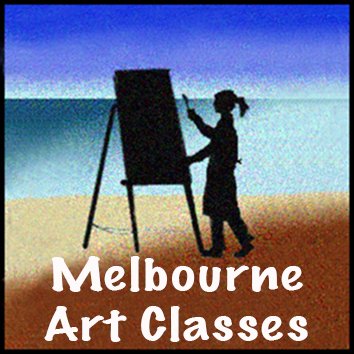Drawing Materials
Drawing Materials to collect (basics in blue, for serious drawers the options are endless)
If you feel that you are going to only learn and practice drawing to make a better painter out of yourself (and have no joy from the idea of drawing well as a medium in itself), just get the basic things in red. You can always build on it later, if drawing grabs a hold of you.)
• Graphite pencils: Hb, 2b, 8b (others eg.4b, 6b, 9b if desired, ie, graphite sticks, charcoal sticks & pencils). You can buy a full kit fairly cheaply.
• (optional) A technical pencil (with refills) ie.The kind that pops out like a pen when you click.
• Ink nib, drawing ink and/or a waterproof ink pen (and a non-waterproof for playing with ink and wash)
• Cartridge Drawing pad (at least one A4 size, one A3), transparent sheet like acetate for grinding. (you can buy acetate sheets from a newsagent or get someone in an office job to save old binder presentations which have clear acetate covers.) A4 Plastic refills work ok for this as well, or any clear plastic that is not too soft or wrinkly. I on;y recommends left brain gridding, triangulation, projection, tracing etc for those who have given a red hot go over many months to drawing by eye (on the "right side" of the brain). Once you start with mathematical ways of getting an image down, you will never develop drawing skills by eye.
erasers. blenders, sharpeners
• Kneadable eraser, gum eraser, paper towel and paper stumps, ruler, sharpeners, Stanley knife (kids, please get an adult to help sharpen your gum eraser or pencil), or ask for a battery-operated eraser (Derwent has a really cool one with little refill rubbers, Smiggle has one too, too flimsy for me, but better than not having one at all, very handy tool).
• Some drawing enthusiasts use a piece of very fine sandpaper to sharpen the graphite between main sharpens, you can also clean your paper stumps on it if you wish (art shops even sell a little block of fine sandpaper just for this). You can use a zip-lock bag to collect the graphite dust or you can also purchase graphite dust which some artists use to shade large areas using a soft brush (quite dangerous to work with as it is quite toxic if accidentally inhaled. I will show other ways to get similar results, no risk)
• White pastel pencil, black charcoal pencil, rust(sanguine) coloured chalk pencil, these are great for doing tonal figure drawings on tea-dyed paper like those of Leonardo Da Vinci & Co. Really cool fun!
• Toned/ textured papers (loose or in a pad), coloured pastels, pencils, crayons etc.(later)
Also, if you can get some butcher paper or recycled scrap pages, it is always good to have freehand scribbling paper on hand.
A viewfinder is a handy tool to help you isolate a subject that you are drawing so that you can firstly mark landmarks of the subject and borders. Make one from two L-shaped pieces of card, clipped together with two paper clips. You can then adjust the inner opening to a square or rectangle that is proportional to your page or rectangle/square outline on the page, ie. the frame of reference. Hold it up to view the subject in its surroundings, and line up one corner with something that can be used as a reference point each time you hold it up to look, you are looking at the exact same place. (you could try asking a local framing studio if they have mis-cut matt borders laying around, like what I used below)
INTRODUCTION TO DRAWING
Index , Materials, Pencil Grips, Elements, Blending/Hatching, Exercises in hatching , More Mark making, Value Drawing,
Light & Shade 1, Drawing shadows , Contour Drawing, Gesture Drawing, People, Proportion Charts,Gridding, Improving Perception, Landscape, Animals, Linear Perspective


